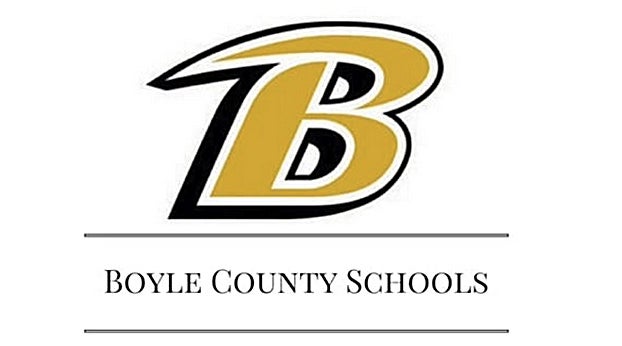Boyle County Schools face new COVID-19 challenges, salary increases
Published 9:29 am Wednesday, November 25, 2020
Student performance worsens with less in-person learning
The Boyle County Schools Board of Education unanimously approved a resolution to amend salary schedules to include a 2% pay raise for all current staff retroactive back to July 1 for this academic year at a board meeting on Nov. 19. Gov. Andy Beshear passed executive orders the previous day issuing new restrictions aiming to control the spread of COVID-19 in response to a record number of deaths and a 400% increase in positive cases over the past nine weeks, according to a press release, which included requirements for bars, social gatherings, fitness centers, venues, professional services and schools. Boyle County Schools are closing their doors to in-person learning for the time being in response to new requirements.
The executive order in regard to schools holds that all public and private elementary, middle and high schools cease in-person learning and transition to virtual-only learning beginning Nov. 23, which was Monday. Middle and high schools will remain in virtual learning with no in-person learning before Jan. 4. Elementary schools can open for in-person learning from Dec. 7 to Jan. 4 provided that the county is not a red zone for COVID-19 cases and the school follows guidelines in the Kentucky Department of Education Healthy at School Guidance on Safety Expectations and Best Practices for Kentucky Schools. The order does not prohibit schools from giving small group targeted services in person, which Superintendent Mike LaFavers said for Boyle County Schools means students can come into school buildings with limited capacity to take tests, have intervention and have internet issues addressed.
Also, LaFavers said one thing he thinks the board should consider in December that they have tried to avoid but many other districts, including Danville Independent Schools, have adopted, is an A/B schedule, at least when the county is a red zone. Since about 84% of families in the Boyle County school district are choosing in-person learning for the spring semester, he said, an A/B schedule structure could allow for more days of in-person instruction as fewer students are in the buildings at once, and an A/B structure can be permitted when the county is a red zone.
“It’s not ideal, but I do think it could potentially get more days of in-person learning,” LaFavers said.
Though LaFavers has said the district tries its best to make virtual learning as close to the same quality as in-person learning, analysis of data from the NWEA MAP assessment as its screener for kindergarten through eighth grade has found students in the district are performing about the same in reading but about 19% worse in math when comparing this year’s fall data and 2019’s, LaFavers said.
“This suggests to us that math is a more difficult subject to replicate consistently during virtual learning and/or in-person learning with the social distancing measures,” LaFavers said in an email. “So much of our quality math instruction is executed in small groups, and so, the loss of small group instruction without social distancing barriers is one of the factors. While 19 percent sounds like a huge gap, it is something we believe we can overcome in time.”
He said the district will need to do a bit of “catch up” with some loss in performance, and one thing he said he thinks will be key in improving performance is more days with students.
“We typically can average nearly one and a half year of academic growth per year for just about every child,” he said. “What we’re getting now is closer to a year.”
One way the district plans to respond is with its academic calendar for the 2021-2022 year, which has not been approved by the board yet and needs two readings. The proposed calendar features 176 days with students, when calendars usually have 172.
Additionally, he said during the meeting that some students doing the self-paced option the district offers are struggling, so something the district would like to do next semester is offer one of the other two options, virtual or in-person, to those struggling with the self-paced option.
During difficulties the pandemic has presented for the district, LaFavers said staff has gone “above and beyond” to make sure students have access to technology, food and other resources, and teachers are strong and have been balancing in-person, virtual and self-paced learners and have pivoted back and forth as the district has transitioned between structures of learning, something outside of their control.
“We’ve all watched our staff have to just go above and beyond the entire year and just do things no one’s asking them to do,” he said during the meeting. “They just know they need to be done for kids.”
In response to staff performance during the pandemic, the board approved the resolution to amend salary schedules to include a 2% pay raise for all current staff retroactive back to July 1 for this academic year. LaFavers said the district did not raise taxes on the community this year back in August, which he said he thinks was a good move. Chief Financial Officer for the district David Morris said the cost of the salary increase is $323,212.75 in general fund, $61,967.77 in state and federal grants and $12,205.66 in food service. The increase includes all staff on regular service salary schedules, and the substitute and extra service salary schedule remain unchanged, he said.
“Along with the tremendous effort and work load being put into the year by our staff, there is also the need to attract and retain outstanding teachers and staff with a competitive salary,” Morris said in an email.
The salary increase will be for the 2020-2021 fiscal year, he said, and since salary decisions for the coming years will be made by the board, the increase will not necessarily be annual. Fund balance and fiscal management allow the district to make the salary increase and plan for future budgets, Morris said.
Morris said the district finished the month with $7,408,263.78 in the general fund, and he said everything looks fairly normal. The only abnormal thing is that sanitizing, personal protective equipment, food service and technological efforts such as ensuring there is one device per child are not eligible for reimbursement under FEMA as the district was hoping. Morris said any FEMA expenditure had to be made in response to a current threat to life or safety, with the guidance good through Sept. 15.
“Because we were not in school prior to September 15th we would not qualify for the assistance prior to that date,” he said in an email. “The action of sanitizing after any known cases or exposures is classified as increased operating costs and not eligible under the FEMA program post September 15.”
The district does have a Coronavirus Aid, Relief, and Economic Security Act allocation of $394,000, which will absorb many of the district’s emergency expenses, Morris said. It also received $27,000 from the federal government through the Last Mile program to help fund hotspots and other technological assistance for students. With this funding, as well as the fact that the KDE will not be making the projected cuts to state programs, Morris said the district believes “the elimination of cuts will mitigate the loss of FEMA funding,” and the funding the district has received through other entities will also help balance things out, especially because the district has been preparing for the possibility of receiving little to no reimbursement from FEMA.
“We’ve been judicious,” Morris said. “We’ve gone in with the plan to don’t anything that we may not get reimbursed for but make sure that we supply the schools with everything they need.”







